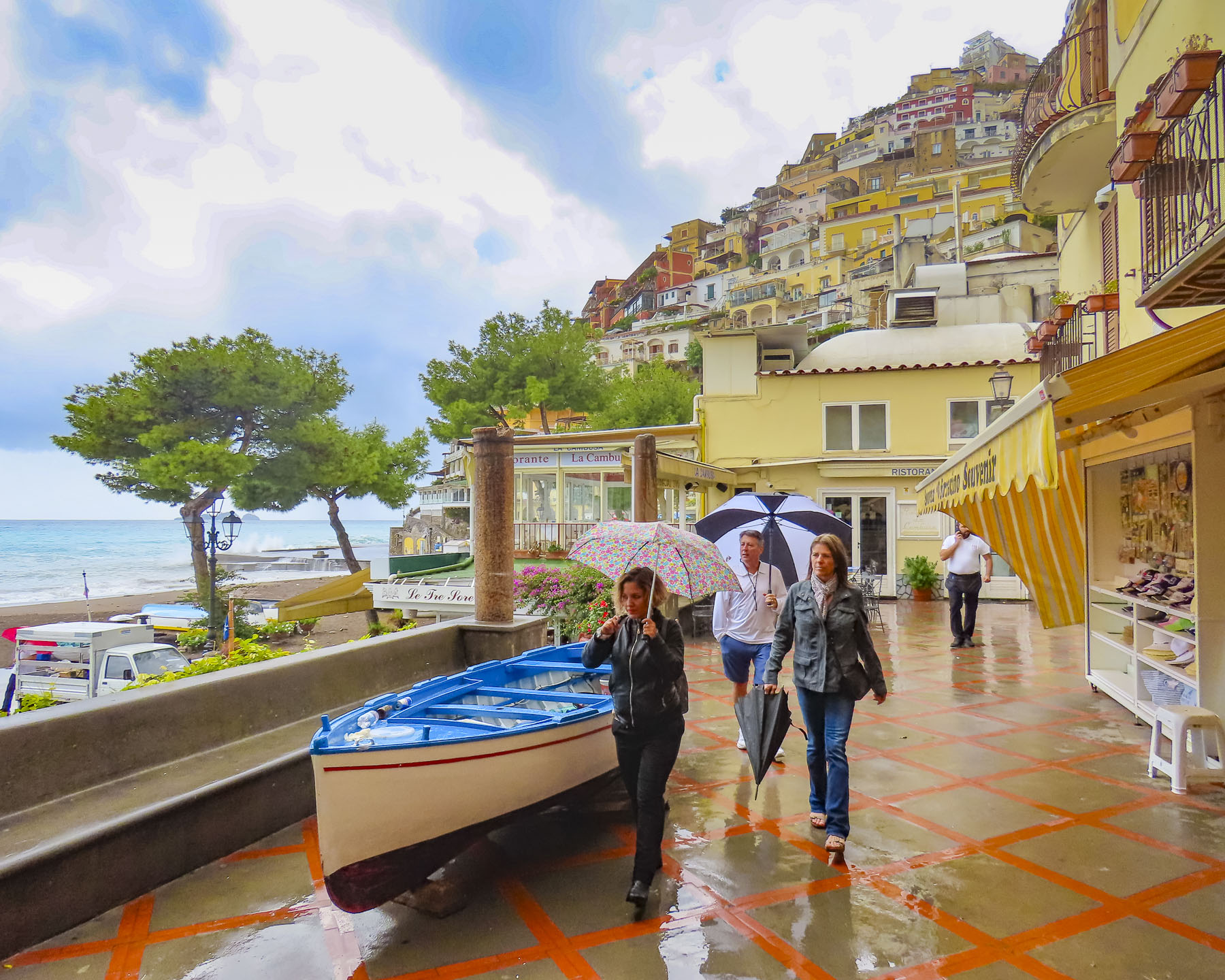Normally in November we’d head to warmer climes south of the equator, but it was payback time for an extended stay in Africa, and the Italian homeland of Donna’s ancestors was calling. We’d realized for awhile that Italy was going to be the most expensive part of our two-year journey. Even with a very favorable exchange rate, traveling through Italy in the off-season was the best way for us to afford this portion of the trip. We’d keep our fingers crossed about Italy’s rainy season. Grey clouds hung low and were as thick as tiramisu as we neared Paestum. Known for its ancient Greek temples dating from 550 BC, we had planned to stop there, but the day was just too damp and dreary. We drove on to Maratea.

The weather improved, with the sun occasionally making an appearance as we turned off the E45 and headed west, through a rural hilly landscape covered with trees and olive orchards, to the Tyrrhenian coast. Here again most hotels and restaurants were closed for the season, but we found a very nice, four-room Bed & Breakfast in Acquafredda, just above Maratea. This part of Basilicata resembled the Amalfi Coast with its narrow cliff-hugging road and rocky coves. It’s one of the regions where Italian families head to escape the crush of foreign tourists that descends on Italy during the summer months. It also makes Basilicata one of the few Italian provinces that borders two seas. The road narrowed to a single lane as we entered the old village.



Fortunately, Donna spotted the traffic light that dictated the direction of traffic flow through the narrow passage before an oncoming bus would have forced us to back down the lane. We had a little difficulty finding La Giara until we realized it was down at the end of a rutted farm lane more suitable for a tractor than a sedan. Run by a gracious older couple who patiently dealt with our rudimentary Italian, the inn was wonderful, with our upstairs room having a view of the distant sea. We were the only guests. The turquoise waters and the pebbly, black sand beach of Spiaggia Acquafredda were a short walk away from the inn. We had the shoreline to ourselves one crisp morning as we walked along its frothy surf.

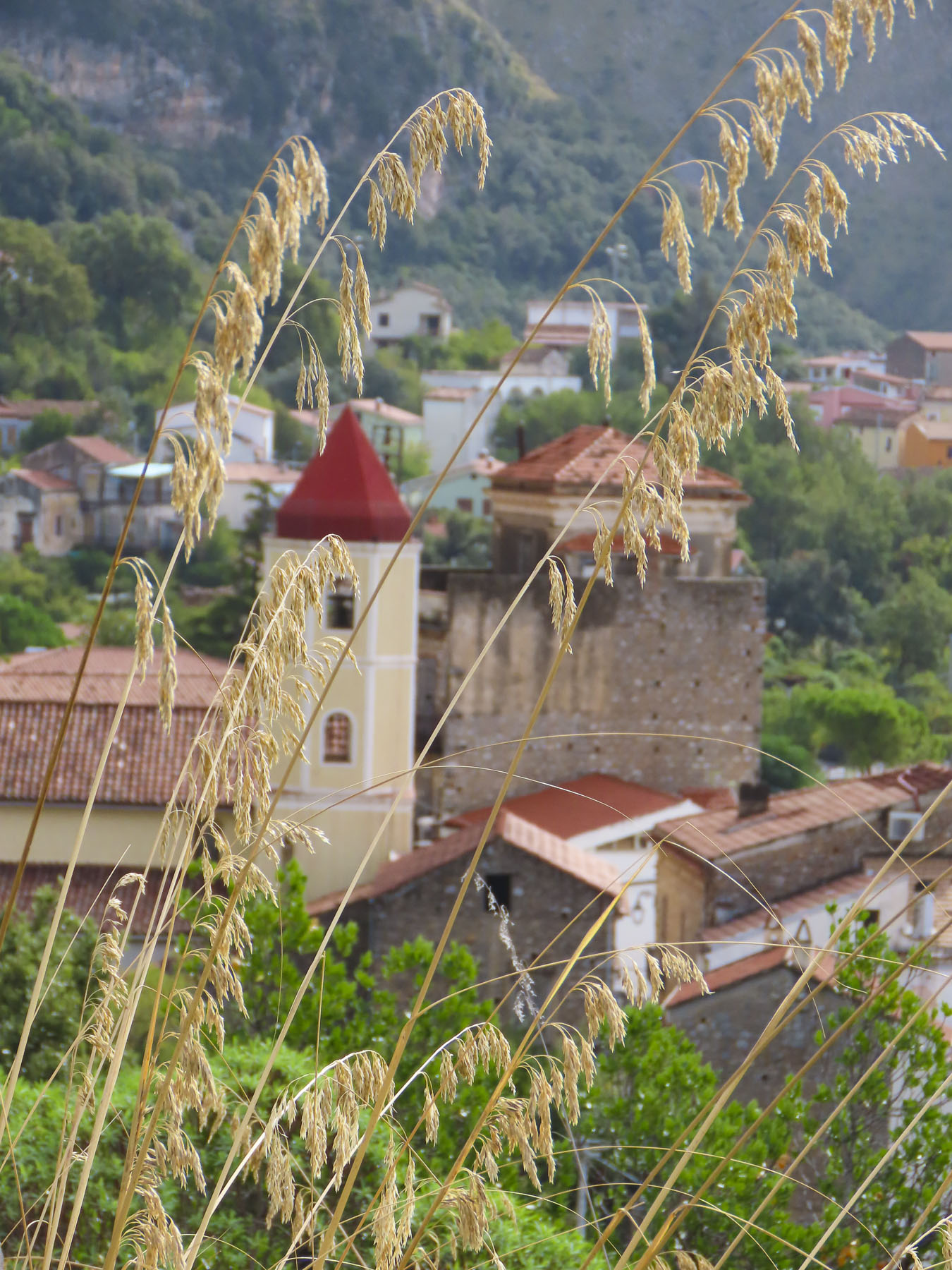
The sun’s golden rays were now shining on the sea as we drove along the serpentine road into Maratea for dinner. We’ve found that even though many tourist establishments are closed in the off-season there is always someone who stays open year-round to cook for his friends and neighbors. And with their reputations online with a discerning community we’ve found that these very local places are inexpensive and great. Ristorante Pizzeria Sapore Di Mare did not disappoint us with its variety of fresh seafood and pasta dishes, and we ended up having three meals there over two days. Blame it on the off-season. There were not any streetlights or shoulders along this cliff hugging road. Fortunately, there was a solid stone guardrail and no oncoming traffic when we rounded a curve and our car’s headlights lit up a man and woman raking hedge cuttings into the middle of our right lane. A quick zig zag avoided catastrophe as screams filled the night air inside and outside of the car. Our hearts were pounding after such a close call!
Breakfast the next morning was delicious though a little strained by our lack of Italian until the husband’s eyes widened when we expressed interest in the olive oil that was served with the homemade bread. Pridefully he brought us small tastings of different olive pressings. A large olive orchard was their true livelihood, and this time of year they were busy harvesting the first olives of the season and pressing them for this coveted golden liquid.

We hadn’t done much research on this part of our trip, only knowing that we would encounter some stunning coastline, so we were pleasantly surprised when we found ourselves in the picturesque, man-made harbor of Marina di Maratea. A small port, with an assortment of pleasure craft and fishing boats, it embraces the coast under a towering 2113-foot-high Monte San Biagio. The mountain is topped with a statue of Christ the Redeemer that is visible for miles along the Tyrrhenian coast.
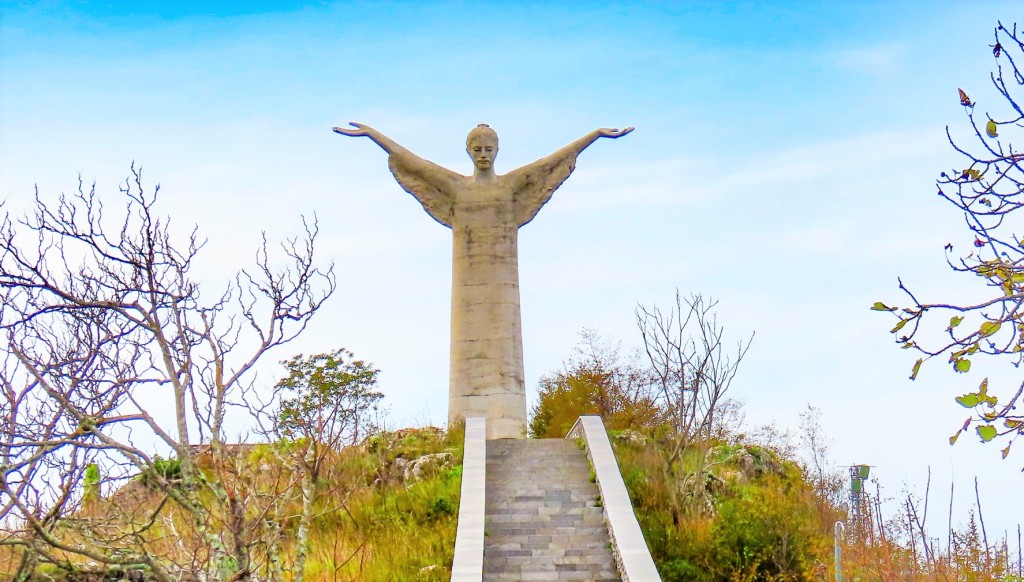
The day was brilliant and with café on the quay at the aptly named Bar Del Porto we planned our ascent of Monte San Biagio. We were relieved to find we could drive to the top of the mountain, a revered pilgrimage site that celebrates the fourth century martyr San Biagio who is credited with several miracles in Maratea, the most important of which was shielding the town from Charles VIII’s French cannon fire during an attempted invasion in the 1400s. As proof of his intervention, next to the altar in the basilica there is a cannonball with a mysterious fingerprint pressed into the iron; it is believed to be San Biagio’s, left there when he deflected the shot with his hands. Legend states that his relics arrived in Maratea in 723 when a ship carrying them from Turkey to Rome for safety was mysteriously stopped by a bright beam of light from the sky; the vessel was unable to sail forward until the relics of the saint were removed from the ship and brought to the mountaintop. A church was then built over the ruins of an ancient Greek temple dedicated to the pagan goddess Athena. Maratea celebrates San Biagio’s feast day every May by carrying his silver statue from the basilica in a processional, on the shoulders of teams of men, down the steep mountainside trail. It is a journey of 4-5 hours into the center of town, through streets filled with the faithful, to Maratea’s oldest church, Saint Vitus, built in the 9th century.
During the high season you are not permitted to drive all the way to the basilica. Instead, for a small fee, a shuttle bus delivers you to the church. In November luck was with us and we were able to zoom up the elevated switchbacks that seemed to float ethereally above the steep slope to the parking lot. The only other vehicle in the lot was a truck belonging to workers repairing the church roof. Regrettably, mid-week, the church was closed.

A gentle sloped walkway led to the summit past the stone ruins of old Maratea. Founded by Greeks over two-thousand years ago, they occupied the hilltop for centuries before the lower village was built in the 11th century to accommodate an expanding populace. The landscape around the ruins was dotted with fragrant wild fennel for which Maratea got its name (from the Greek word marathus, wild fennel.) In the mountains behind the church the clouds were almost low enough to cover the tiny Hermitage of Our Lady of the Olive Trees that sits isolated in the rugged terrain.
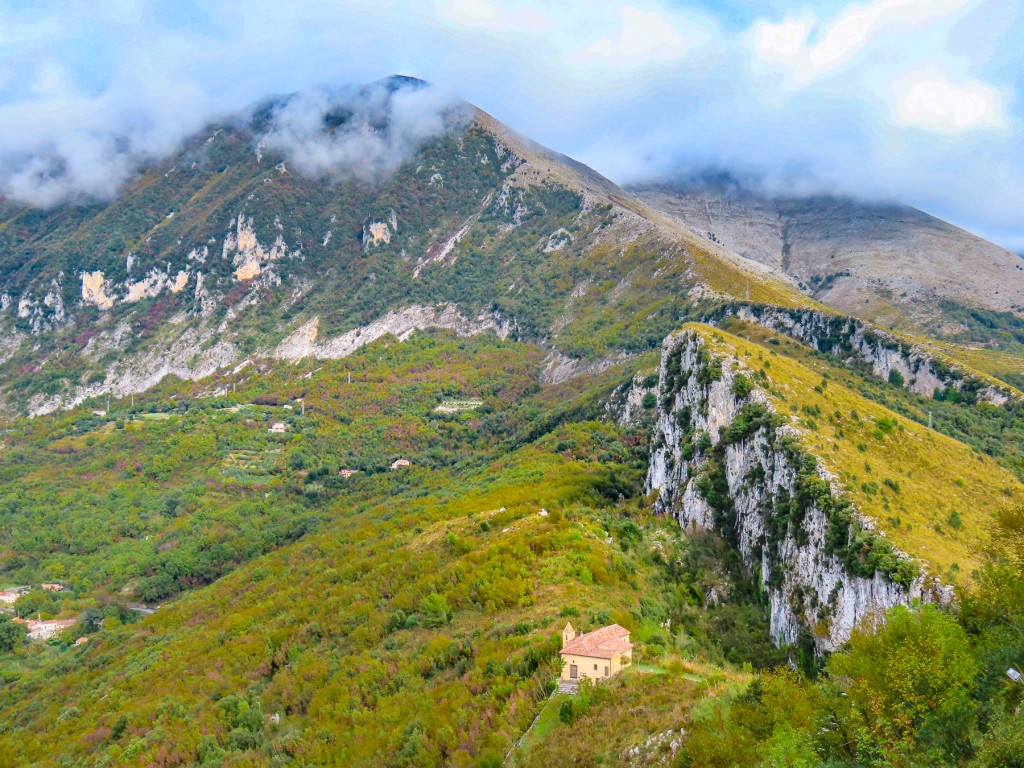
In 1963, Italian sculptor Bruno Innocenti was commissioned to create a statue of Christ to crown the summit. His youthful portrayal of Jesus without a beard, made from poured concrete mixed with crushed marble from the famous quarries in Carrara, faces East, inland toward the rugged mountains and the church that holds San Biagio’s relics. Standing 70ft high with an arm span 62ft wide, it is the fifth tallest statue of Christ in the world.


The views up and down the rugged coastline and inland were spectacular. Maratea is also known as “the Holy City of Southern Italy,” so named because the small town has 44 churches. We were excited when we spotted several tiny bell towers in the distant village from the overlook.

We spent the rest of the afternoon exploring the newer village which lines the slope of a valley that leads to the sea. Archeological evidence found in local caves reveals that the area has been inhabited since the Stone Age.

Far below the Statue of Christ the Redeemer, steep cobbled alleys branched off the main road and wove their way up the lower slope of the hill, past centuries-old homes worn by the elements.
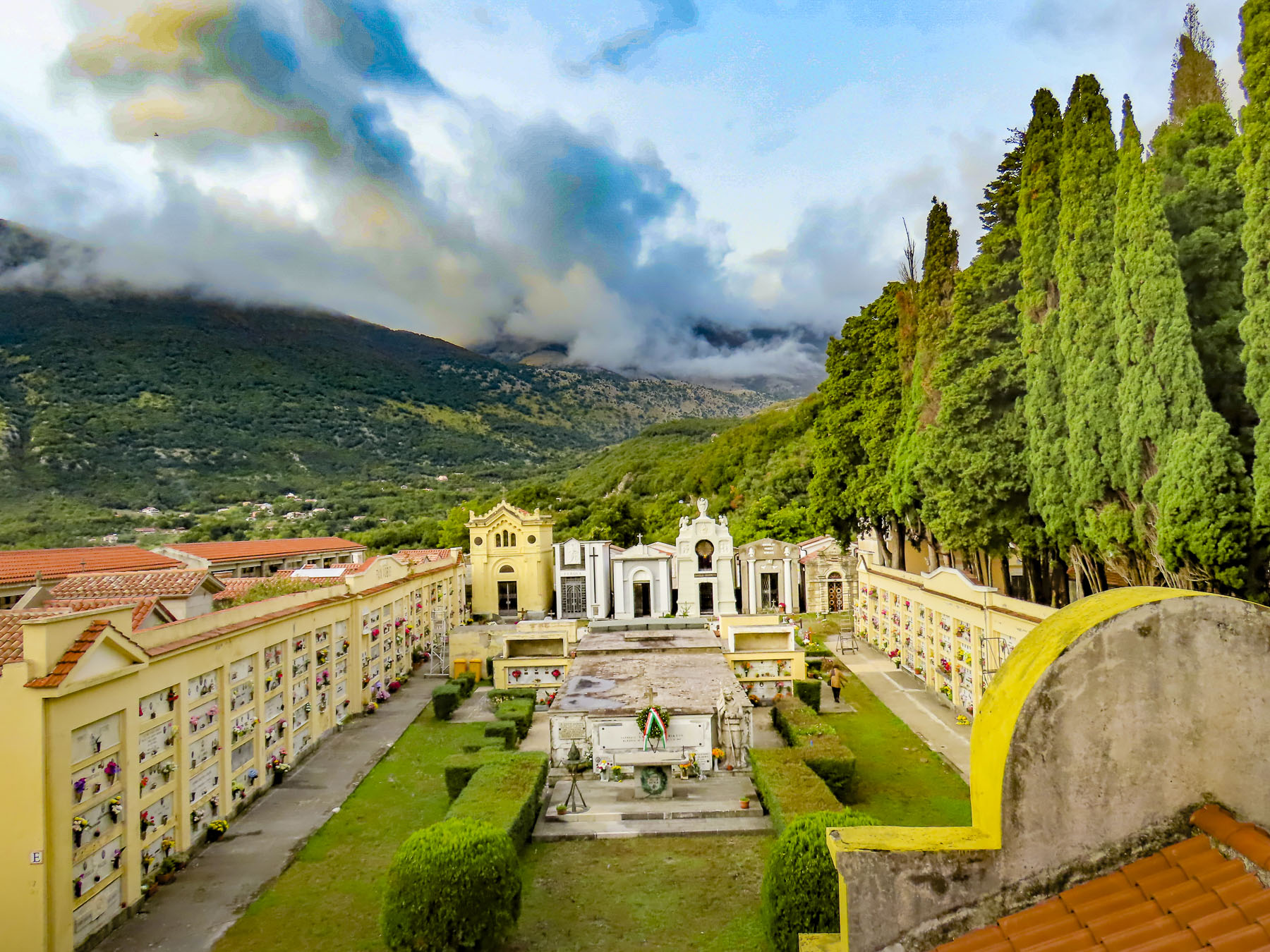




Occasionally trees and vines sprouted through the cracked sidewalks and clutched the walls. It felt like the village was deserted. Nearing the end of the day we found a wonderful vantage point to capture the silhouette of the village and the valley against a colorful sunset.

Only a two-hour train ride from Naples, Maratea, Basilicata’s “pearl of the Tyrrhenian Sea” has stayed off the radar of foreign tourists and remains “the Amalfi without the crowds,” and one of “Italy’s best kept secrets.” It’s definitely an area worth exploring in greater depth.

The next morning, we contemplated driving 2.5 hours along the scenic coast to Lamezia Terme, where we would connect to route E45 and continue south through the Calabria region to the ferry port in Villa San Giovanni, on the toe of the boot, across from Sicily.
Fearing I would insist on stopping too many times along the coastal route to take pictures, we opted to head inland for the drive instead. The day got warmer as we proceeded further south through a verdant landscape of rolling hills covered with olive trees or freshly tilled fields.
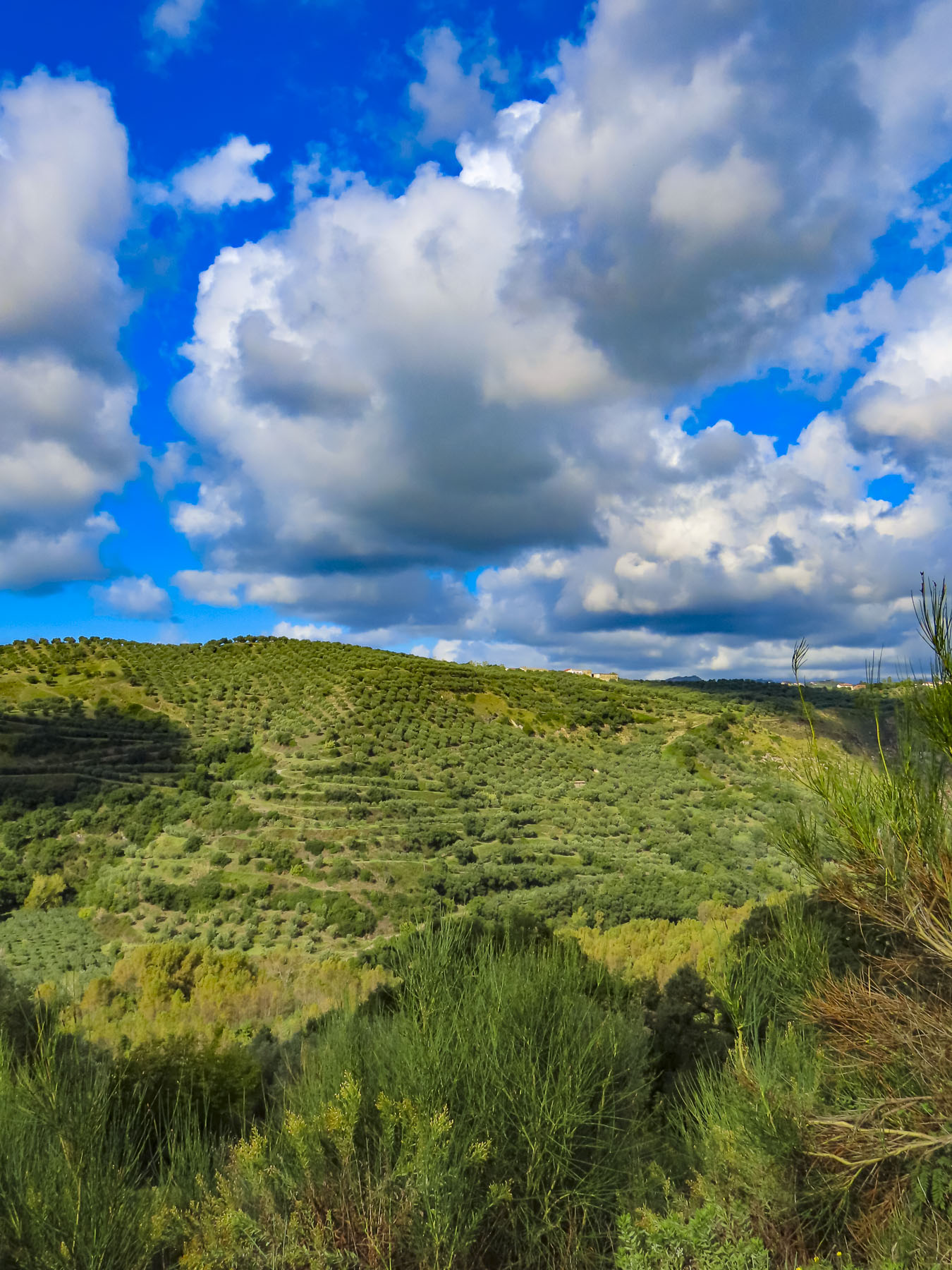

Spotting the seaside town of Scilla from the highway, we decided to detour for awhile since we were making good time. Famous in Greek mythology for its legendary sea monster, Scylla, the town is set dramatically high on the cliffs that front the sea. Castello Ruffo commands a hooked promontory below the town.

Its defenses that once protected the village from invasion are now just a historic backdrop for a wide crystalline beach that sparkled brilliantly in the afternoon sun.

Back on the highway we stopped to refuel and have lunch before boarding the ferry in Villa San Giovanni to cross to Messina, Sicily. Back in the states we would only eat at a highway rest stop if we were desperate. In Italy, we eagerly searched for them, since there we found them to be gourmet havens for travelers. They serve delicious plain or grilled panini, pizza, and of course good espresso. They also usually have an interesting assortment of snacks for later, as well as the usual assortment of souvenirs. Yes, magnets and coffee mugs. But also a candy known as Pocket Espresso! After making our purchases, we picnicked under a tree on the edge of the parking lot which overlooked the Strait of Messina.

The powerful currents that race through this narrow strait have been legendary since the time of Homer, when Greek sailors first started to explore the unknown waters around southern Italy. The dangerous opposing currents on either side of the strait personified in the Odyssey as the mythical sirens Scylla and Charybdis who lured unwary mariners to their deaths in their turbulent waters. The phrase “between Scylla and Charybdis,” refers to being stuck in a difficult situation with poor options, similar to the common expression, between a rock and a hard place.


After stopping to get our ticket stamped, we drove aboard the Giuseppe Franza, operated by Caronte & Tourist, and parked on the car deck amidst a variety of large commercial and private vehicles. We stood outside on the passenger deck as the ship’s powerful engines easily pushed the 308ft ferry, capable of carrying 600 passengers and 120 cars, off the dock for the forty-minute crossing to Messina. So different from the ancient Greek bireme that Odysseus’s men would have rowed on their journey.
Our destination was the coastal town Taormina. Fortunately, we didn’t have to row there.
Till next time, Craig & Donna









































